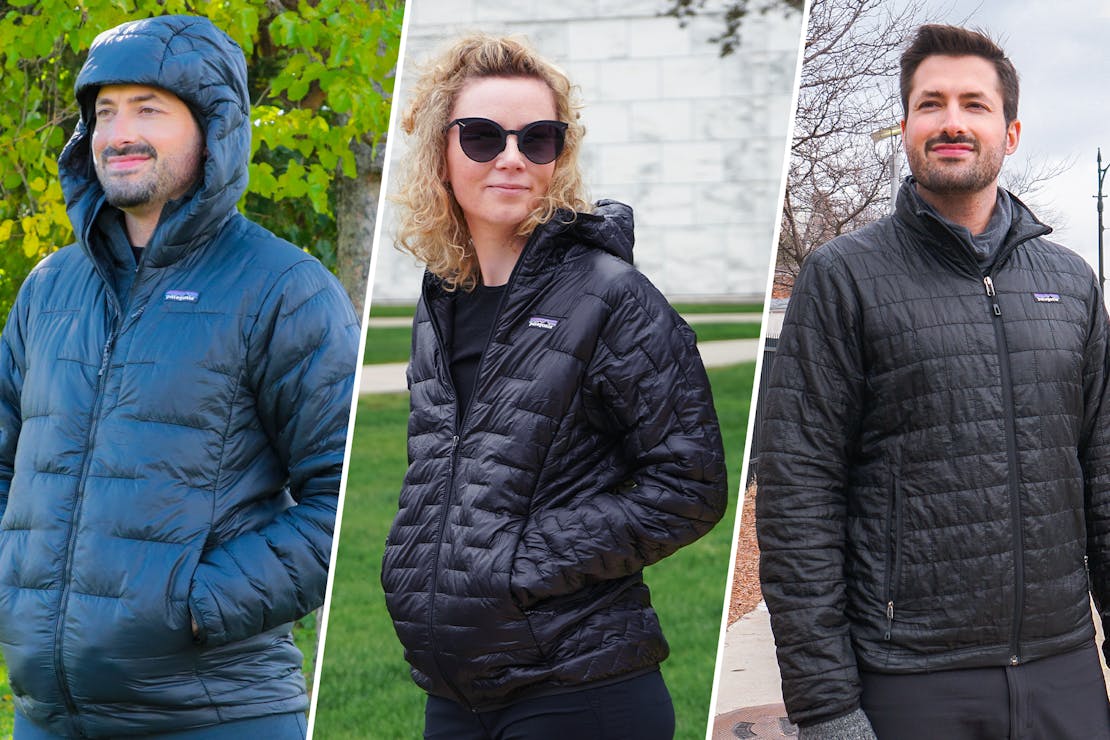One of the most relatable head-scratching dilemmas is picking out a travel destination. You know how it goes: you imagine yourself at a ski resort, maybe a cup of hot chocolate in one hand while gazing out into the orange-draped snowy landscape. The question is though, are you in Aspen? Niseko? Verbier? All look similar in the postcards, but their differences are what defines your trip.
In the same way, here we have three packable insulated jackets. They’re all from the same brand, designed to keep you warm in the winter, and they all look pretty similar. With names like Macro, Micro, and Nano, they’re even pretty similarly named, so which should you get? That’s what we’re here to answer.
But if you’re in a rush, here’s a quick look at what each of them is best at.
- Most packable: Nano Puff
- Best in insulation: Macro Puff
- Lightest weight: Micro Puff
What’re these jackets for?
Before we start talking even more in detail about which puffer jacket is which and what’s different between them, it’s important to manage your expectations. These aren’t arctic-conquering puffer jackets by any means—they’re geared towards casual users who might take them for the occasional trek through a slightly snowy trail or just to keep you warm in the cold airport terminal. To be more specific, they’re designed for temperatures around 20°F to 50°F (that’s -6.67°C to 10°C), not sub-zero.
To get an idea of the technical differences between each jacket, we've collected some key specs in the chart below.
| Macro Puff | Micro Puff | Nano Puff | |
|---|---|---|---|
| WEIGHT | 15.3 oz (434 g) | 9.3 oz (264 g) | 11.9 oz (337 g) |
| FILL | 100% polyester PlumaFill (synthetic) | 100% polyester PlumaFill (synthetic) | PrimaLoft Gold Insulation Eco 100% recycled polyester (synthetic) |
| DISTRIBUTION | 135 g body, 90 g side panels and sleeves | 65 g (whole jacket) | 60 g (whole jacket) |
| SHELL MATERIAL | 0.8 oz 10-denier 100% recycled ripstop nylon w/ DWR (durable water repellent) finish | 0.8 oz 10-denier Pertex Quantum 100% ripstop nylon w/ DWR (durable water repellent) finish | 1.4 oz 20-denier 100% recycled polyester ripstop w/ DWR (durable water repellent) finish |
| POCKETS | 2x Hand; 1x Chest (outer); 2x Inner drop | 2x Hand; 2x Inner drop | 2x Hand; 1x Chest (inner) |
That all looks great on paper, but what does it actually mean for how each puffer jacket performs? Let's get into it.
Best for: Full-time Travelers

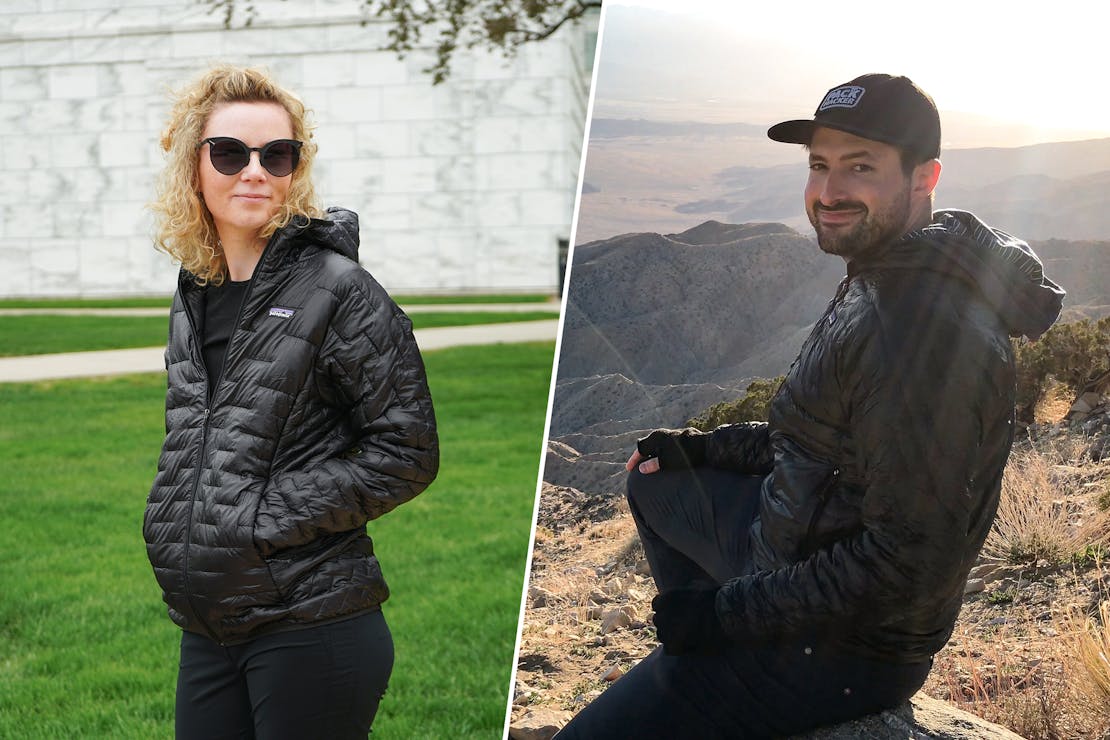
Insulation
As you can see, there are differences among the three, most notable in weight and fill. As for similarities, all three use synthetic fill rather than down. Down is generally regarded as the gold standard for jacket insulation. The downside (pun intended) for animal lovers is that it’s made from feathers, usually duck or goose. Fortunately, Patagonia’s synthetic fills perform well as a replacement.
When it comes to keeping you warm, the Macro Puff performs the best among the three. That’s expected of the heaviest puffer jacket here, and it certainly feels like it. It also doesn’t have a hoodless version at the time of writing, and the extra material contributes to weight.
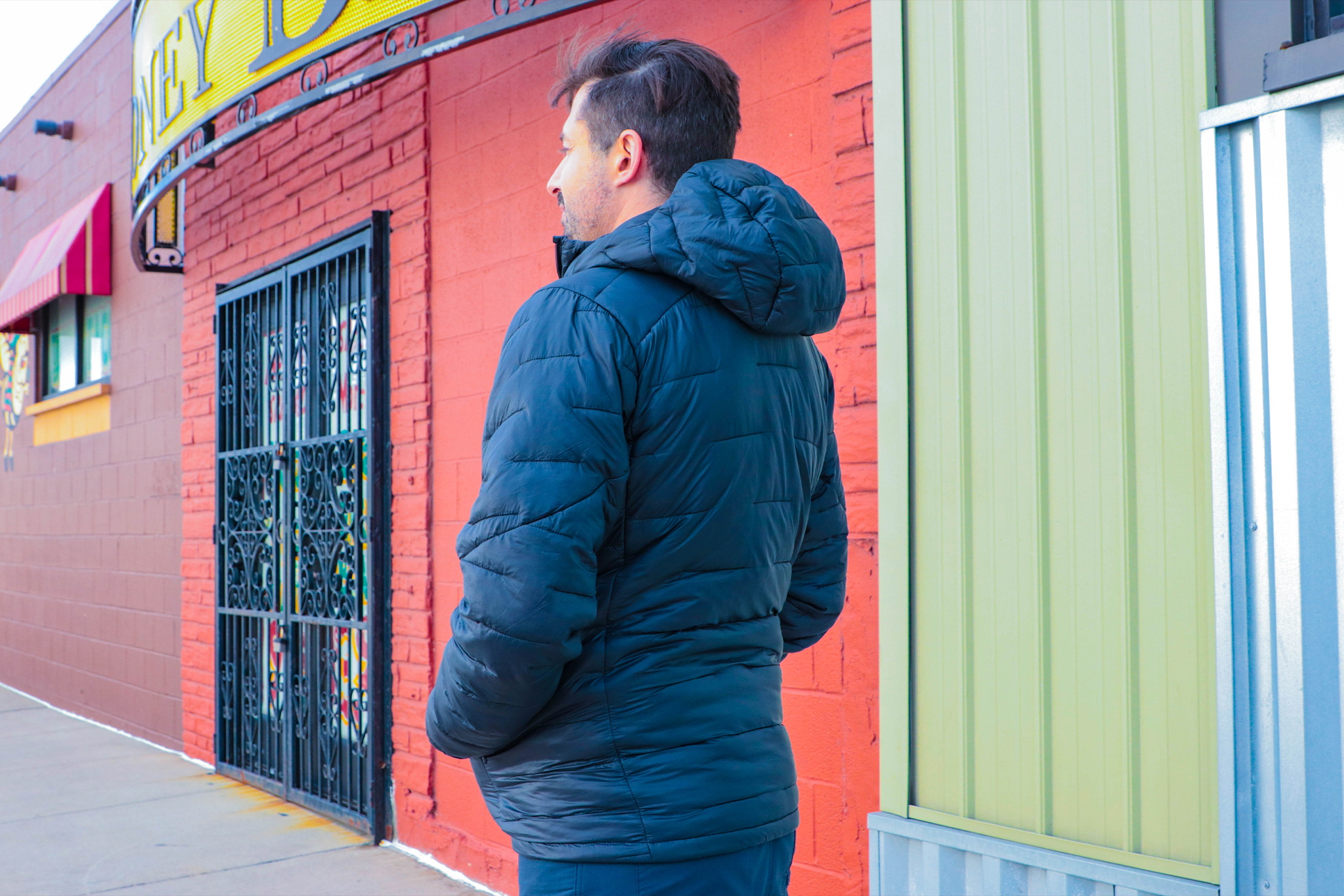
On the opposite side of the spectrum, the Nano Puff will keep you the least warm because it has less fill than the rest. Still, it’s by no means ineffective—it’s just that its siblings do a better job overall. Meanwhile, the Micro Puff sits in the middle in terms of retaining heat. It’s also worth noting that the baffle design (the grid-like stitching that covers the puffer jacket) differs between them. The Macro Puff has bigger sections of insulation, followed by the Micro Puff and then the very checkered Nano Puff. This baffle is what keeps the insulation in place, so thinner fill will require more stitching, hence the Nano’s design.
All of that said, your mileage may vary on thermal performance since each user has a different body type and tolerance to cold. What works for us may not work for you.

Next, let’s talk about how each puffer jacket wears. The thin and light design of the Nano Puff fits closer to the body, while the Macro Puff feels a lot loftier than the rest. Once again, the Micro Puff sits in the middle, with a good balance of lightness and loftiness. It’s worth mentioning that we’ve noticed our Nano Puff has lost some of its loftiness over time, something that we’ve not seen on the Micro Puff (though we haven’t used the Macro Puff for as long).
Features
Let’s move on to the other puffer jacket niceties offered. Bear in mind we’re leveling the playing field a bit here by comparing the hooded versions of each. On that note, let’s start with their hoods.
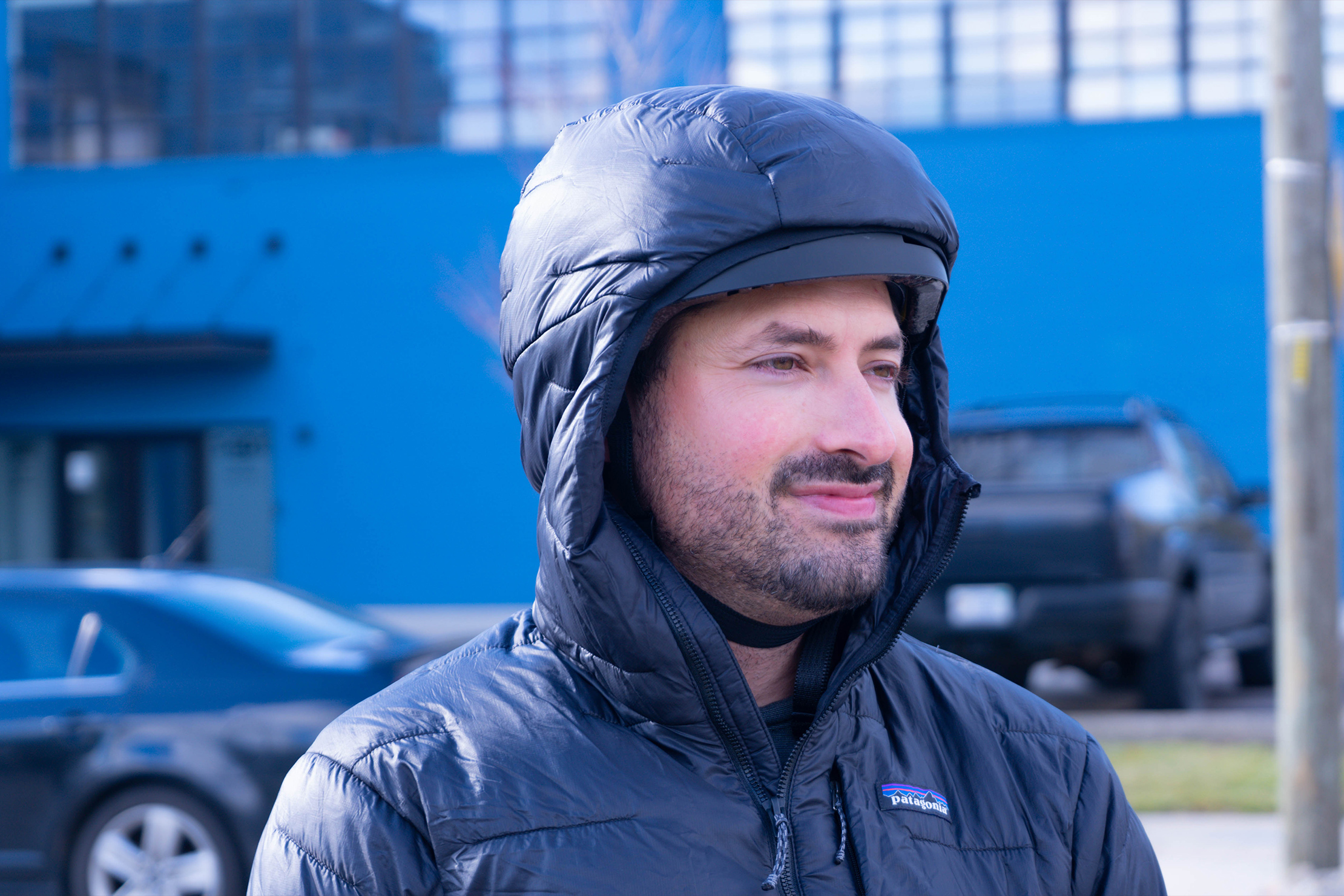
The Macro Puff stands out here with its large hood. It’s so large, in fact, that it can fit an entire bike helmet underneath. This is great for cyclists who don’t want to stuff anything between their helmet and head. On the other hand, the hoods of the Micro Puff and Nano Puff do need to go under helmets.
Patagonia thoughtfully designed the Macro Puff’s hood to have a single-point adjustment via cinch located in the rear, which can take some getting used to. That said, we don’t find it too cumbersome to adjust when we need to.

Speaking of cinches, both the Macro Puff and Nano Puff have cinches at the hems and hoods, while the Micro Puff lacks them altogether. Instead, the Micro Puff relies solely on elasticated edges along the hood and hem to keep things snug. This saves a tiny bit of weight and contributes to the Micro Puff being the most lightweight puffer jacket here.
All three have a pair of hand pockets where you can stuff some everyday carry items like a smartphone and wallet. However, the three start to distinguish themselves when it comes to additional gear storage. Both the Macro and Micro Puffs have two inner drop pockets where you can put a water bottle. Meanwhile, the Macro and the Nano Puffs both have a chest pocket, though the latter’s is inside rather than out. The order goes Macro Puff > Micro Puff > Nano Puff in terms of the total number of pockets.
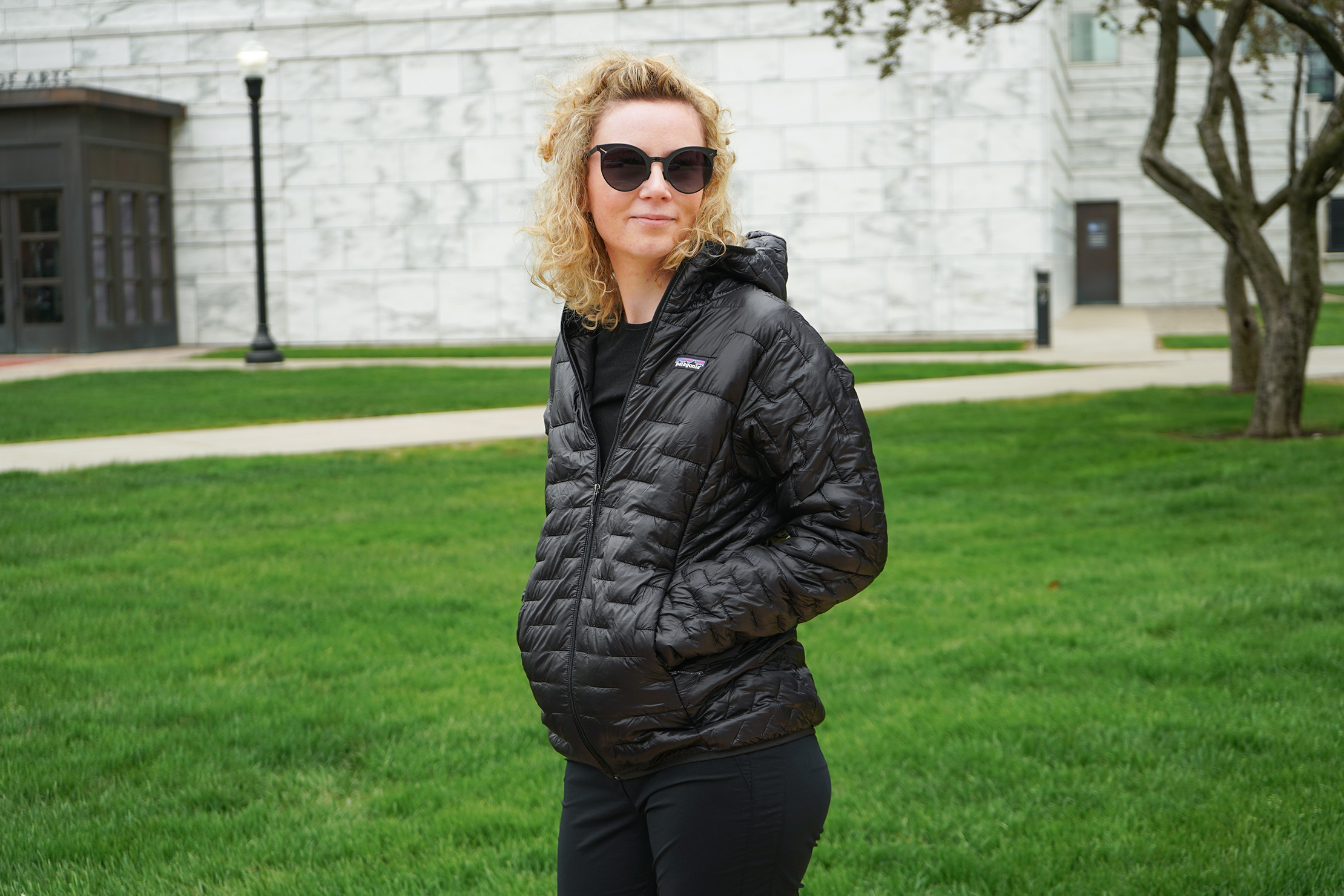
Interestingly, the hand pockets on the Micro Puff hand pockets are noticeably positioned higher than those on the Macro Puff and Nano Puff. This means that the pockets remain accessible even when you’re wearing a harness (like a hip belt) or a waist pack. Those who wear a lot of harnesses, whether it’s for mountain climbing or other sports, will appreciate the slight variation in pocket placement.
Packability
Since all three are packable jackets, let’s take a look at how they pack up and how small they get.
Patagonia Nano Puff vs. Macro Puff vs. Micro Puff | A packable puffer jacket means less folding and fiddling when it’s time to pack up.
Because the Macro Puff is the biggest (and heaviest) of the three, it’s understandably still the largest when compressed, followed by the Micro Puff and then the Nano Puff. However, the Macro Puff’s large compressed size isn’t too big of a deal when you consider that it can be used as a travel pillow in a pinch. One side is lined with soft fabric that feels good to lay your head against, and its relatively large size means better cushioning.
It’s worth noting that leaving any of these packable jackets in their compressed state for a long period is not recommended as it could potentially damage the fill and affect their loftiness in the long run.
Conclusion
Despite the similarities in looks, features, and even names, the Macro Puff, Micro Puff, and Nano Puff each excel in their own right. In summation, the Macro performs the best in retaining heat because of its size and weight. The Micro Puff’s light weight and raised pockets are great for those who want to maximize mobility and wear a harness. Lastly, the Nano’s small compressed size makes it a solid choice for travelers trying to maximize every square inch of packing space in their bag. Whichever you choose, though, you’re getting a puffer jacket that’ll keep you warm.
